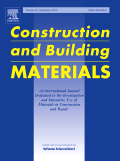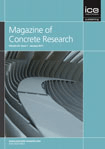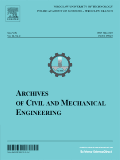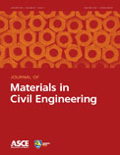
STEEL AND COMPOSITE STRUCTURES
Scope & Guideline
Elevating Research in Building and Construction
Introduction
Aims and Scopes
- Structural Analysis and Design:
Focus on the analysis, design, and optimization of steel and composite structures, including the study of load-bearing capabilities, stability, and structural integrity under various conditions. - Material Behavior and Performance:
Investigations into the mechanical properties of steel and composite materials, including their behavior under different loading conditions, environmental effects, and long-term durability. - Seismic and Dynamic Response Studies:
Research on the seismic performance of structures, including retrofitting techniques and dynamic analysis to enhance resilience against earthquakes and other dynamic loads. - Innovative Construction Techniques:
Exploration of new construction methods, materials, and technologies that improve the efficiency and sustainability of steel and composite structures. - Computational Methods and Simulations:
Utilization of advanced computational techniques, such as finite element analysis and machine learning, to predict and analyze the behavior of structural systems. - Sustainable and Eco-friendly Practices:
Focus on the integration of sustainable materials and practices in the design and construction of steel and composite structures, aiming for reduced environmental impact.
Trending and Emerging
- Advanced Composite Materials:
Increasing focus on the use of advanced composite materials, such as fiber-reinforced polymers and functionally graded materials, which offer enhanced performance characteristics for structural applications. - Machine Learning and AI Applications:
Growing integration of machine learning and artificial intelligence in structural analysis, design optimization, and predictive maintenance, showcasing the potential for data-driven approaches in engineering. - Resilience and Sustainability in Design:
Emphasis on developing resilient structures that can withstand extreme events while promoting sustainable practices in material selection and construction methods. - Innovative Retrofitting Techniques:
Research on innovative retrofitting methods for existing structures to improve seismic performance and extend service life, reflecting a proactive approach to infrastructure management. - Multi-Disciplinary Approaches:
An emerging trend towards interdisciplinary research that combines insights from materials science, engineering, and environmental studies to address complex challenges in structural design and performance. - Dynamic Response and Vibration Control:
Increased interest in the dynamic response of structures and the development of vibration control systems to enhance the performance of buildings and bridges under dynamic loads.
Declining or Waning
- Traditional Steel Design Methods:
There has been a noticeable decline in studies focused solely on conventional steel design methods, as the field moves towards more innovative and composite approaches that integrate new materials and technologies. - Static Load Analysis:
Research centered on static load analysis is becoming less prominent compared to dynamic and seismic studies, as the engineering community increasingly recognizes the importance of structures' responses to dynamic loads. - Basic Composite Structural Research:
Basic studies on composite structures without advanced applications or innovative materials are less frequent, with a growing emphasis on practical applications and complex interactions in composite systems. - Historical Case Studies:
The journal has seen fewer historical or purely theoretical case studies, as the focus shifts towards real-world applications, experimental validations, and modern methodologies. - Single Material Studies:
There is a diminishing interest in research focused solely on either steel or concrete materials independently, as the trend moves towards integrated studies that examine interactions between different materials in composite systems.
Similar Journals

Construction and Building Materials
Connecting research to real-world construction challenges.Construction and Building Materials, published by ELSEVIER SCI LTD, is a highly regarded journal in the fields of Construction and Building, Civil and Structural Engineering, and Materials Science. With an impressive Q1 ranking across multiple categories in 2023, the journal is recognized for its high-impact research, reflected in its Scopus rankings—13th out of 379 in Civil and Structural Engineering and 9th out of 223 in Building and Construction. Spanning from 1987 to 2024, it serves as a pivotal resource for researchers, professionals, and students aiming to explore advances in materials used in construction and their applications. However, it does not currently offer Open Access options. The journal stands as a vital platform for disseminating cutting-edge findings that can drive innovation and efficiency in the construction industry while addressing contemporary challenges, thus reinforcing its significance in shaping sustainable practices and technological advancements.

Functional Composites and Structures
Elevating Material Science through Collaborative Insights.Functional Composites and Structures is a prestigious academic journal published by IOP Publishing Ltd, dedicated to advancing the field of materials science with a focus on innovative composite materials and their structural applications. Established in 2019 and running through 2024, this journal uniquely bridges several disciplines, consistently ranking in the Q2 quartile across key categories including Ceramics and Composites, Electronic, Optical and Magnetic Materials, and Mechanics of Materials. With a commendable Scopus rank that places it within the top tiers of its field, the journal is instrumental for researchers, engineers, and scholars seeking to explore the latest developments in material properties, functionality, and applications. Although access options are not specified, the open-access nature of the journal promotes wider dissemination and engagement with cutting-edge research. As the demand for smarter, more efficient materials continues to grow, Functional Composites and Structures serves as a vital resource for fostering collaboration and driving innovation in material sciences.

Journal of Structural Integrity and Maintenance
Fostering Excellence in Civil Engineering and Materials ScienceThe Journal of Structural Integrity and Maintenance, published by Taylor & Francis Ltd, serves as a prestigious platform dedicated to the advancement of knowledge in the fields of structural integrity, civil engineering, and materials science. With an ISSN of 2470-5314 and an E-ISSN of 2470-5322, this journal is uniquely positioned to address the critical challenges faced by researchers and professionals in building and construction, mechanical engineering, and related domains. Since its inception in 2016, this journal has been consistently recognized for its quality, currently holding a Q2 rank across several disciplines, including Building and Construction and Civil and Structural Engineering in 2023. The journal aims to publish high-quality research that contributes to the understanding and maintenance of structural integrity, fostering innovations that promote safety, efficiency, and sustainability in engineering practices. Researchers and students alike are encouraged to engage with this rich repository of knowledge, which plays a vital role in shaping future advancements in structural engineering and materials science.

MATERIALS AND STRUCTURES
Innovating Sustainable Solutions for ConstructionMATERIALS AND STRUCTURES, published by SPRINGER, is a prestigious peer-reviewed journal dedicated to advancing the fields of building and construction, civil and structural engineering, and materials science. With an impressive impact factor and a notable Q1 ranking across multiple categories in the 2023 Journal Citation Reports, including Mechanics of Materials, this journal stands as a vital resource for researchers and professionals seeking to disseminate and access high-quality research. Established in 1985, it has continually evolved, showcasing revolutionary research and emerging technologies in material engineering. The journal provides a platform for innovative ideas and methodologies, contributing significantly to the body of knowledge essential for the advancement of sustainable construction practices. Although it does not currently offer Open Access options, the rigorous peer review process ensures the integrity and relevance of its publications, cementing its role as a leading journal in its field. Researchers, industry experts, and students alike will find invaluable insights within its pages, making MATERIALS AND STRUCTURES an essential read for anyone involved in engineering and materials research.

MAGAZINE OF CONCRETE RESEARCH
Pioneering Research in Concrete for a Resilient TomorrowThe Magazine of Concrete Research, published by Emerald Group Publishing Ltd, is a pivotal journal in the fields of Building and Construction, Civil and Structural Engineering, and Materials Science, boasting an impressive track record since its inception in 1949. As of 2023, it holds a Q2 category ranking across its related disciplines, indicating its strong influence and credible contributions to the field with Scopus ranks placing it favorably among its peers. With an emphasis on advancing knowledge surrounding concrete technology and construction practices, this journal serves as a key resource for researchers, industry professionals, and students alike. Though not Open Access, the Magazine of Concrete Research continues to cut through the complexities of concrete-related innovations, inspiring advancements in both academic research and practical applications. Engage with the latest findings and technological developments in concrete research, ensuring you stay at the forefront of this essential field.

Archives of Civil and Mechanical Engineering
Unveiling Innovations for a Sustainable TomorrowArchives of Civil and Mechanical Engineering is a distinguished peer-reviewed journal published by SpringerNature, focusing on advancing the fields of civil and mechanical engineering. With an impressive Q1 ranking in both categories in 2023, this journal caters to a global audience, addressing the evolving challenges and innovations within these vital engineering disciplines. The journal has been a pivotal platform since its inception in 2006, and it continues to be essential for researchers and practitioners seeking to publish and access high-quality research. The absence of an Open Access option ensures that published works maintain rigorous academic standards, thereby enhancing their value within institutional repositories. With a robust impact factor and high visibility on Scopus—ranking #122 out of 672 in Mechanical Engineering and #74 out of 379 in Civil and Structural Engineering—this journal is an ideal venue for professionals, researchers, and students dedicated to advancing their knowledge and contributing to cutting-edge engineering practices. Based in Germany and operating internationally, the Archives of Civil and Mechanical Engineering invites submissions that address critical issues and solutions in contemporary engineering.

Advances in Concrete Construction
Exploring New Frontiers in Concrete TechnologyAdvances in Concrete Construction, published by TECHNO-PRESS in South Korea, is a pivotal academic journal dedicated to the fields of Building and Construction, Civil and Structural Engineering, and Mechanics of Materials. Established with the aim of fostering innovative research, this journal has rapidly gained recognition, achieving a commendable Q2 ranking across multiple categories, including Safety, Risk, Reliability, and Quality as of 2023. Featuring a blend of rigorous peer-reviewed articles, the journal serves as a vital platform for scholars, engineers, and students alike to disseminate cutting-edge research and practical applications in concrete construction technologies. Despite its absence of Open Access, the journal's inclusion in Scopus with notable rankings - such as #66 in Building and Construction - underscores its growing influence and commitment to quality as it converges on significant advancements from 2016 to 2024. By contributing to this respected journal, you join a community dedicated to exploring the future of sustainable and efficient construction practices.

Composites Part C: Open Access
Fostering Innovation in Composite ResearchComposites Part C: Open Access, an esteemed journal published by Elsevier, is at the forefront of research in the fields of Ceramics and Composites, Mechanical Engineering, and Mechanics of Materials. Launched in 2020, this fully open-access journal facilitates unparalleled access to significant advancements in composite materials, ensuring that research findings are disseminated widely and freely throughout the global academic community. With an impressive Q1 ranking across multiple related categories and robust placements in Scopus rankings, specifically #78 in Mechanical Engineering and #24 in Materials Science, the journal serves as a vital platform for researchers, professionals, and students to publish their work and engage with cutting-edge studies. It aims to foster innovation and collaboration in the development and application of composite materials and their technologies, making it an indispensable resource for anyone invested in these dynamic fields.

Epitoanyag-Journal of Silicate Based and Composite Materials
Pioneering Research in Silicate-Based MaterialsEpitoanyag-Journal of Silicate Based and Composite Materials is a premier international journal published by the Scientific Society Silicate Industry-SZTE, focusing on the development and application of silicate and composite materials. With its Open Access policy established in 2013, this journal provides a platform for researchers, professionals, and students to disseminate and access high-quality research without barriers. The journal aims to foster advancements in the field by covering a broad spectrum of topics, including material characterization, innovative applications, and sustainability initiatives related to silicate-based and composite materials. Its commitment to sharing valuable research makes it an essential resource for those looking to stay at the forefront of material science. Located in Budapest, Hungary, the journal not only serves a global audience but also contributes to the ongoing dialogue within the materials science community.

JOURNAL OF MATERIALS IN CIVIL ENGINEERING
Transforming Ideas into Engineering SolutionsJOURNAL OF MATERIALS IN CIVIL ENGINEERING is a highly regarded publication within the field of civil engineering, published by the ASCE-American Society of Civil Engineers. This journal, which has been actively contributing to the discourse in building and construction materials since 1989, has established itself as a vital resource for researchers and practitioners alike, evidenced by its impressive Q1 rankings across multiple categories, including Building and Construction, Civil and Structural Engineering, Materials Science, and Mechanics of Materials as of 2023. With a strong focus on innovation and application in materials technology, it provides insights that are paramount for advancing practices in civil engineering. The journal's commitment to disseminating high-quality research is reflected in its exceptional standing within Scopus, where it ranks in the top quartile of its respective fields. Although not an open-access journal, it remains an essential platform for disseminating impactful research findings and fostering professional development in the materials science community. For more information or to explore the latest publications, researchers can access the journal through the ASCE library.